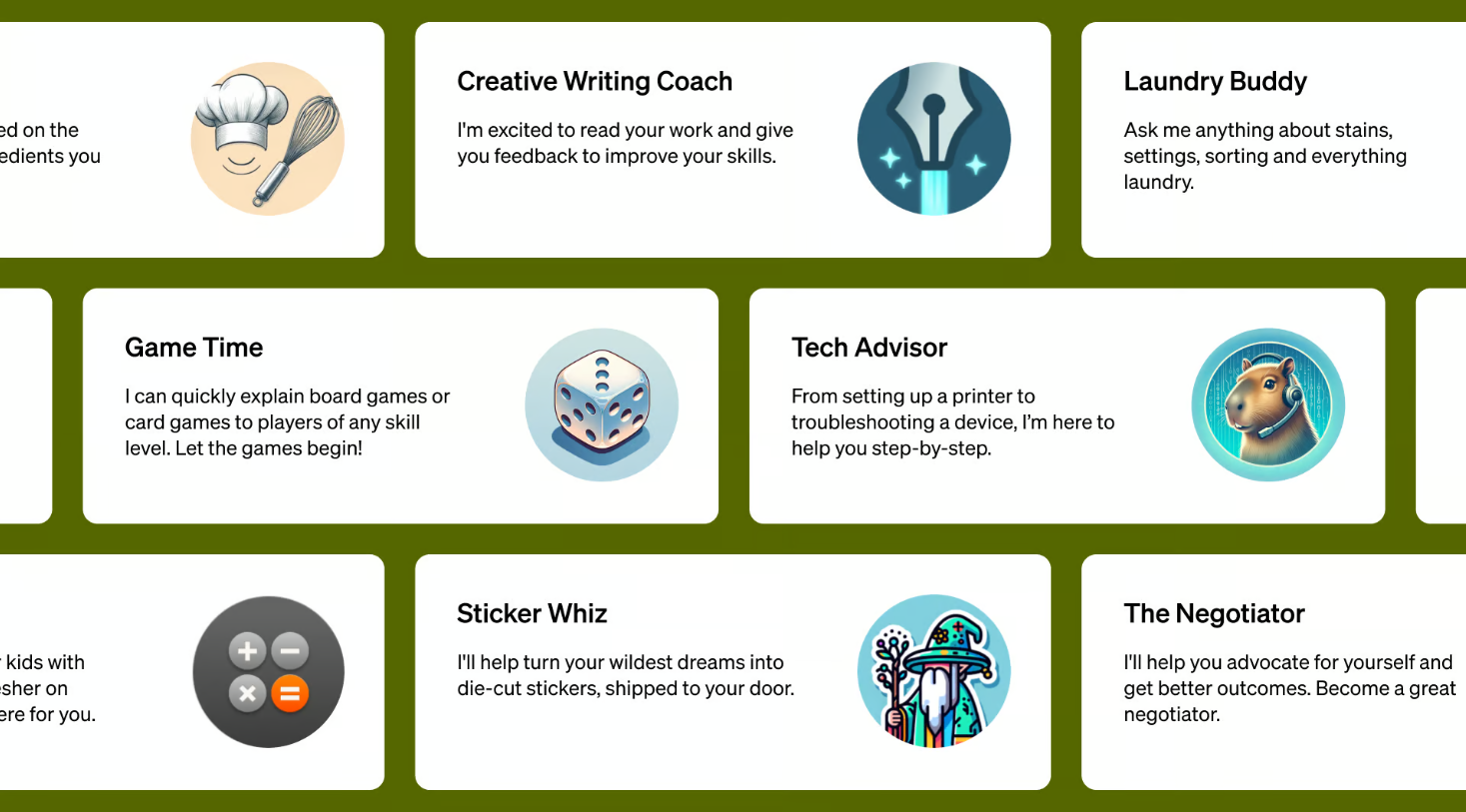OpenAI launches custom chatbots — this is how they work and what they can do

If you’ve been impressed with how quickly AI seems to be developing, you’re going to want to hear about this latest leap: you can now create your own version of ChatGPT with no coding knowledge whatsoever.
The way chatbots like OpenAI’s ChatGPT, Google’s Bard, and Microsoft’s Bing Chat work is by training on massive amounts of data – mainly obtained from the internet. While that’s a lot of knowledge, more is not always better when it comes to niche topics or subjects that require insider information.
Ok but what does this mean exactly? Let’s say you run a small laundry business. You might not know how to code using Python but you’ve certainly picked up a lot of knowledge about how to handle different stains, what all the buttons on your machines mean, and which setting to use for which fabric. Thanks to OpenAI’s latest release, you can teach ChatGPT all about how you get things done at your laundromat in the same way as you would with a new employee. Once it’s trained based on the conversations you’ve had together and the user manuals you asked it to read, it will then be able to answer questions that are tailored to your company.
These niche AI chatbots, referred to as GPTs, are ready to use right now! Even ones obsessed about your lights and darks such as Laundry Buddy.
You can use GPTs created by OpenAI (Laundry Buddy is one of them), build your own, or use GPTs that are created by the community. OpenAI predicts that the best GPTs will be the ones created by the people for the people.
I launched my first custom GPT seven hours ago. It's already sparked more than 1,000 conversations! This is the power of the platform, truly incredible distribution right from the start.If you aren't exploring custom GPTs, you're missing out. https://t.co/6koNC5lrpH pic.twitter.com/PexYNOslAsNovember 11, 2023
This will be big
Currently GPTs can be shared publicly, by the end of the month there will be an official GPT store featuring creations by verified builders, and in the coming months you’ll be able to earn money based on how many people are using your GPT. If you were looking for a passive income side hustle this could be something to look into.
Examples of GPTs that OpenAI created so far include Game Time (quickly explains board or card games), Tech Support Advisor (for when your kids are too impatient to teach you how to set up your new phone), and Creative Writing Coach (it reads your work and gives you feedback to improve your skills).
Get instant access to breaking news, the hottest reviews, great deals and helpful tips.

Once you get a new idea it just takes a few seconds to get started. Tell the GPT creator the name of your new bot, its purpose, what tone it should use when responding to prompts and you have yourself a basic custom GPT.
If you want to spice things up, you can connect your GPT to other apps, such as your email for example, to create your own personal assistant. As mentioned earlier, sharing your personal or company wisdom with your custom GPT will truly make it your own.
For now GPTs are available to paid-up Plus and Enterprise users. The latter plan also allows users to design internal-only GPTs for the private use of their companies.
More from Tom's Guide
- I cover AI for a living — here's what I'm most excited about from Web Summit 2023
- Outlook for Windows is getting a big upgrade with Copilot AI integration
- I tested YouTube’s new AI feature — what it does and how it works

Christoph Schwaiger is a journalist who mainly covers technology, science, and current affairs. His stories have appeared in Tom's Guide, New Scientist, Live Science, and other established publications. Always up for joining a good discussion, Christoph enjoys speaking at events or to other journalists and has appeared on LBC and Times Radio among other outlets. He believes in giving back to the community and has served on different consultative councils. He was also a National President for Junior Chamber International (JCI), a global organization founded in the USA. You can follow him on Twitter @cschwaigermt.
